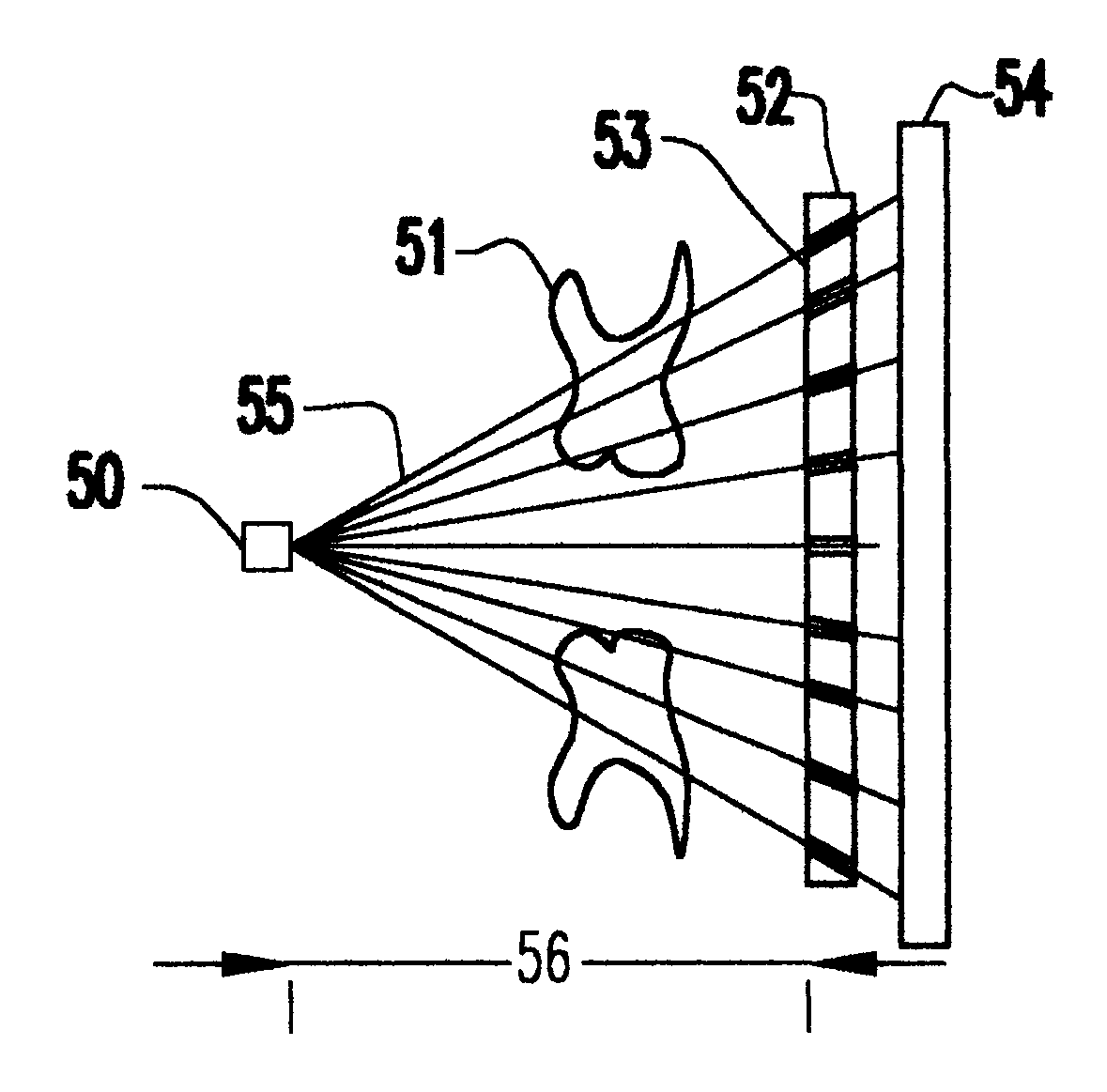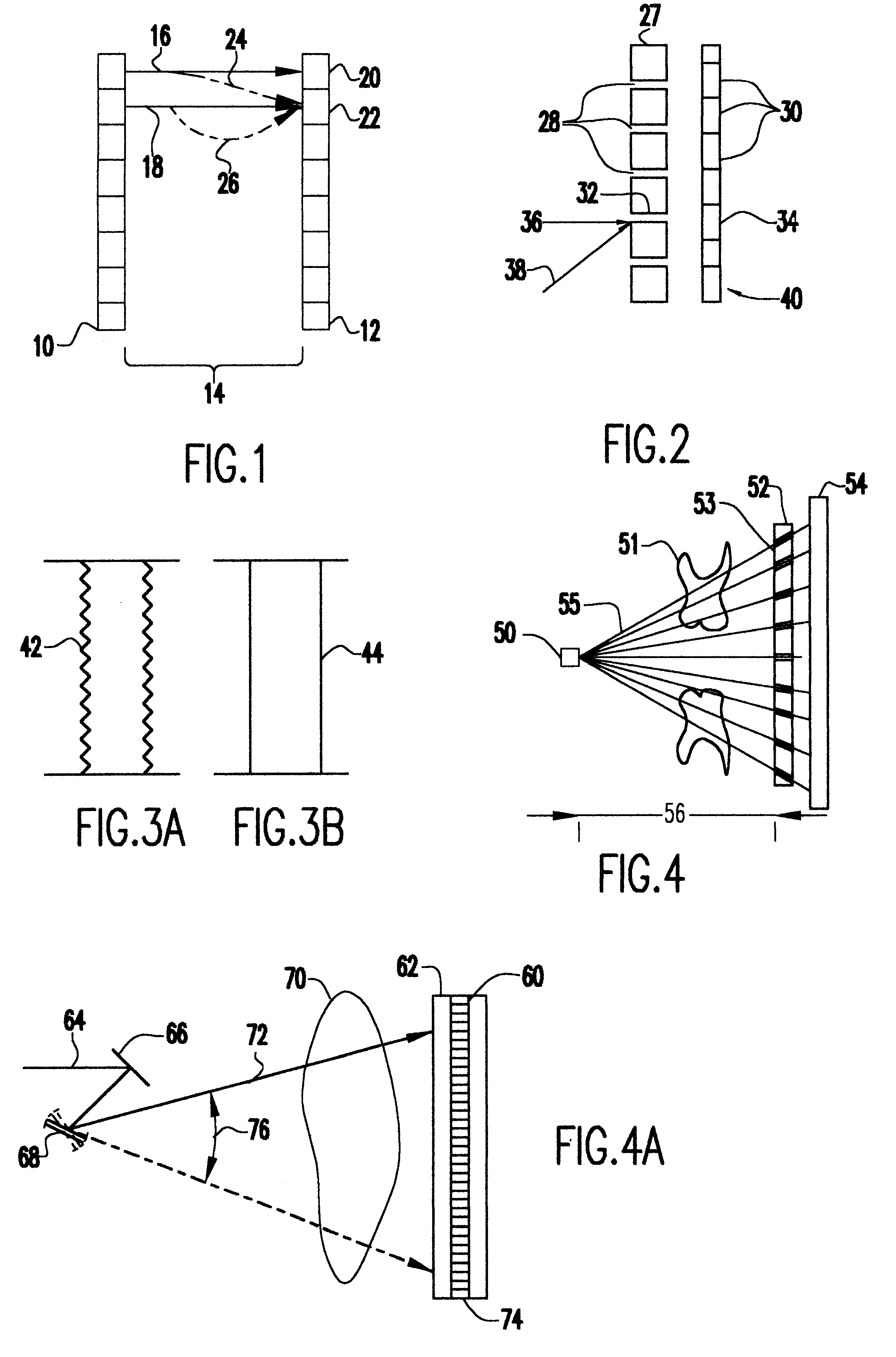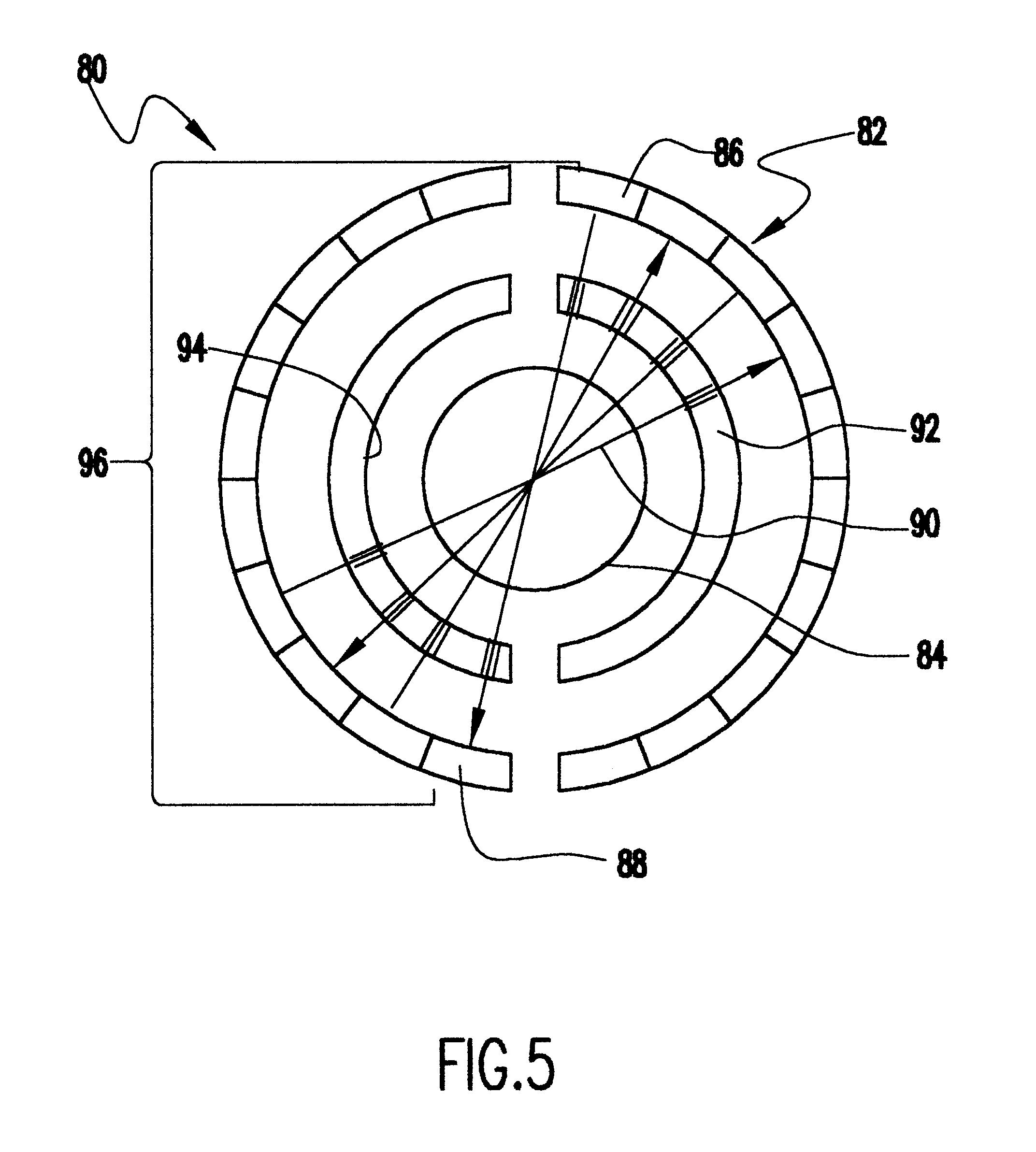Transillumination imaging instrumentation with scattered light discrimination
a technology of scattered light and imaging instrument, applied in the field of transillumination imaging instrument, can solve the problems of missing an anomaly altogether, difficult to detect small structures in an object being imaged, and thickness contour of the subject obj
- Summary
- Abstract
- Description
- Claims
- Application Information
AI Technical Summary
Benefits of technology
Problems solved by technology
Method used
Image
Examples
Embodiment Construction
FIG. 1 shows an emitter array 10 spaced away from a detector array 12. Space 14 accommodates an item to be imaged. This invention is primarily directed to biological and medical applications, therefore the arrays 10 and 12 would be positioned to image, for example, a body part or tissue such as a tooth or breast. The emitter array 10 produces a plurality of collimated light beams 16 and 18 which are directed towards specific detectors 20 and 22. Stray light 24 from light beam 16 may be deflected from its intended path towards detector 22 upon encountering an object inside the item being imaged. If this stray light were not discriminated against at detector 22, an object in the path of light beam 18 may not be detected.
As discussed in detail in U.S. Pat. No. 4,945,239 to Wist et al., there are several techniques which can be used to discriminate against stray light beam 24 at detector 22. For example, light 16 could be polarized or have an embedded signal (e.g., pulse code, etc.), an...
PUM
 Login to View More
Login to View More Abstract
Description
Claims
Application Information
 Login to View More
Login to View More - R&D
- Intellectual Property
- Life Sciences
- Materials
- Tech Scout
- Unparalleled Data Quality
- Higher Quality Content
- 60% Fewer Hallucinations
Browse by: Latest US Patents, China's latest patents, Technical Efficacy Thesaurus, Application Domain, Technology Topic, Popular Technical Reports.
© 2025 PatSnap. All rights reserved.Legal|Privacy policy|Modern Slavery Act Transparency Statement|Sitemap|About US| Contact US: help@patsnap.com



